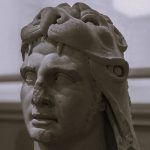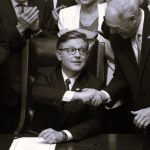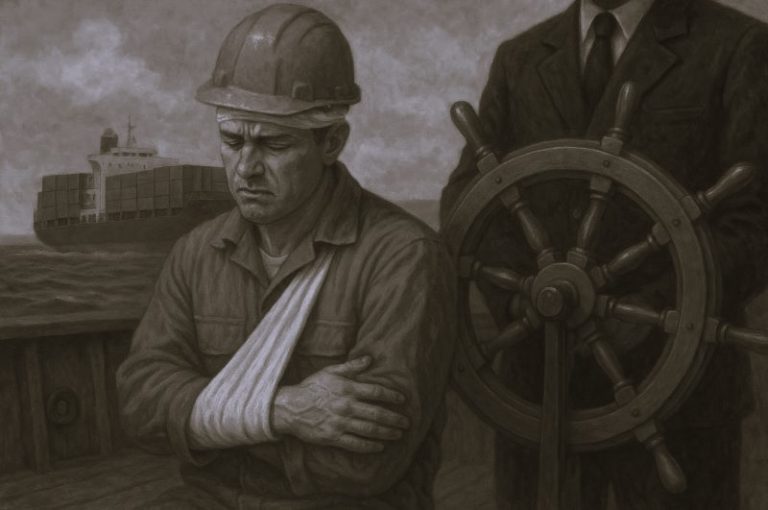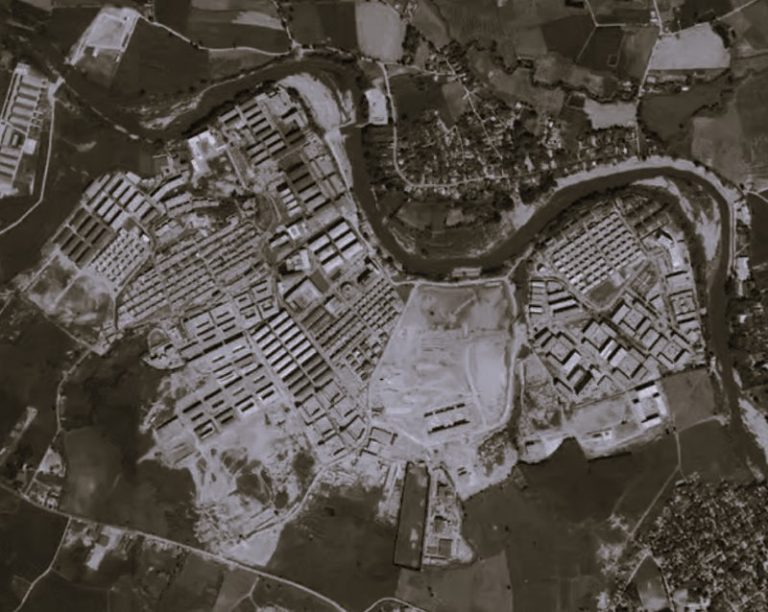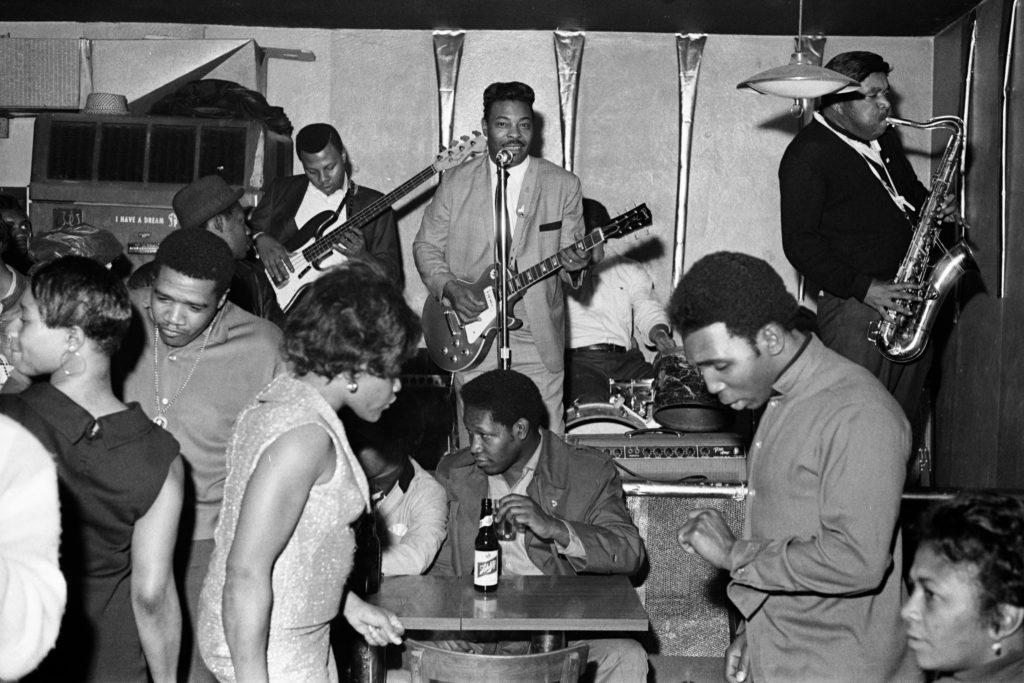
How did the Great Migration of African-Americans in the twentieth century affect the development of jazz music in Chicago?
Originally published by Newberry Digital Collections for the Classroom, Newberry Library, republished with permission for educational, non-commercial purposes.
Introduction
During the period known as the Great Migration (1915-1970), six million African-Americans moved from southern states to urban areas in the North and West. In 1900, ninety percent of black people in the United States lived in the South. By 1970, only fifty-three percent lived in southern states. Over the course of the migration years, the number of African-American Chicago residents grew to one million individuals – an increase from two percent of the city’s population to thirty-three.
African-Americans found many reasons to leave the South. After the 1876 presidential election, the U.S. federal government withdrew all troops from the former Confederate states, bringing an end to Reconstruction and leaving local governments free to institute a draconian and overtly racist social system. Named for a stereotyped stage character played by a white man in blackface (skin darkened with burnt cork), Jim Crow laws enforced racial segregation in all aspects of public life, from railroad travel to restroom use.
White Southerners also used extralegal terror against the black population. Seventy-three percent of the nearly five thousand recorded lynching victims between 1882 and 1968 were African-American, and lynch mobs also targeted white victims for being sympathetic to their black neighbors. In 1907, Mississippi politician James K. Vardaman said, “If it is necessary every Negro in the state will be lynched; it will be done to maintain white supremacy.” White Mississippians elected him to serve as governor and then U.S. Senator.
Economics also played a large part in the Great Migration. The exploitative sharecropping system often locked African-American families into inescapable debt. A boll weevil infestation devastated the rural southern economy during the 1920s, and the Great Depression of the 1930s worsened the situation. The Chicago Defender, a weekly African-American newspaper founded in 1905, regularly ran features exposing anti-black violence in the South side-by-side with proclamations of employment opportunities in Chicago for those willing to make the move northward.
World War I, which simultaneously caused a need for more manufactured goods and stemmed the flow of new immigrant workers from abroad, opened up new employment opportunities for African-Americans. Restrictive immigration laws passed by the U.S. Congress in 1917 and 1924 opened further workforce positions for the burgeoning black urban population.
When those leaving the South arrived in Chicago looking for work, they became part of a vibrantly developing culture. Jazz music had been created in the early twentieth century in the thriving port city of New Orleans. African-American musicians combined musical knowledge gained from performing in marching bands and opera orchestras with improvisational ability honed in a cultural milieu that demanded music for all occasions, from rent parties to funerals. Musicians joined the Great Migration, and some of the originators and early masters of the new music came to Chicago in search of greater opportunities.
The Midwestern metropolis had audiences, venues, and – perhaps most importantly for those of us living today – recording facilities. The early jazz musicians who distrusted the new medium of recorded music and declined to let their sound be committed to wax largely survive in name only, but the farsighted players who saw the opportunity in the new technology and embarked on recording careers in the early 1920s became international stars who changed the course of world music.
The Great Migration continued until 1970, and jazz in Chicago underwent many changes at the hands of generations of creative musical artists. The performers who came to prominence after World War II had a major impact on the history of the music, as artists such as Birmingham transplant Sun Ra developed daring new forms of composed and improvised music. The experimentalists of the 1960s African-American musical collective known as the Association for the Advancement of Creative Musicians (AACM) pushed into new musical territories, and the concepts they developed are still being appreciated and appropriated today.
The following set of essays and collection of documents present these interrelated subjects through four specific topics: the history of the Great Migration, the origins of jazz in New Orleans, the movement of jazz to Chicago, and the ongoing history of Chicago jazz.
Note: The language in the excerpted chapters reflects the racist rhetoric of the times. It is important for teachers and students to understand the intensity of the prejudice faced by millions of African-Americans during the twentieth century, even in supposedly enlightened areas north of the Mason-Dixon Line. Richard Wright, Louis Armstrong, and Mezz Mezzrow present distinctly individual accounts of their personal experiences, but they all present non-whitewashed portraits of the era’s racist hate.
Up from the South

Leaving the South wasn’t an easy thing to do. Richard Wright describes the extent of subterfuge he had to perform in order to leave his job “cleanly, smoothly, without arguments or scenes” from his white boss, because “southern whites hated the idea of Negroes leaving to live in places where the racial atmosphere was different.”
Born in 1908 at Rucker’s Plantation near Natchez, Mississippi, Richard Wright was the grandchild of slaves. Both of his grandfathers had served in the United States military during the Civil War. After moving with his family to Arkansas and back again to Mississippi, Wright moved to Memphis, Tennessee, on his own at age seventeen. Working as a deliveryman and dishwasher, he read voraciously and became deeply engaged with modern American literature and criticism.

After bringing his mother and younger brother to live with him in Memphis, Wright decided to move his family to Chicago. He continued to work a variety of jobs while honing his craft as a writer. After moving to New York in 1937, he published Uncle Tom’s Children, a collection of short stories. 1940’s Native Son became the first bestselling novel and first Book-of-the-Month Club selection written by an African-American. In 1945, he published his autobiography, Black Boy. A 1946 visit to France ended what patience he still had for life in the American racist system. He moved his family to Paris in 1947 and never returned to the country of his birth.
While living in Chicago, Wright was an inhabitant of Bronzeville, a South Side neighborhood legendary for the rich cultural life of its African-American citizens. From 1929 to 1932, he and his family lived at 4831 S. Vincennes Avenue, designated a Chicago landmark in 2010. Bronzeville, also known as the “Black Metropolis,” experienced a population boom between 1910 and 1920, the early peak of the Great Migration. Black-owned businesses and institutions and the residence of leading figures in sports, music, and social activism made the neighborhood a Midwestern rival of Harlem.

However, Chicago was no promised land of peace and plenty. Thirteen days of violence erupted in Chicago during the “Red Summer” of 1919 after a young black man named Eugene Williams swam into a South Side stretch of Lake Michigan typically used by white people. White beachgoers began stoning Williams, who eventually drowned. After police refused to arrest any perpetrator, violence erupted between black and white citizens. The intensity of the fighting led to the state militia being summoned to the chaotic city. Nearly two weeks after the unrest began, one thousand African-American families were homeless, over five hundred people were injured, and thirty-eight people were dead.
Although Chicago did not have a system of Jim Crow laws like the southern states, the new migrants faced intense discrimination in employment and housing. Forces such as the expansion of industry during World War II and the beginning of International Harvester’s commercial production of mechanical cotton pickers in 1944 led to the so-called Second Great Migration, which lasted until 1970 and featured an even larger number of migrating people than the first wave. Unfortunately, the meatpacking and steel industries in Chicago were dead or declining by the 1960s. The enormous African-American population of the city, while creating and sustaining a rich and unique culture, was faced with economic challenges that would eventually lead to the reverse migration of the 1980s.
Origins of Jazz in New Orleans

From its very beginning, jazz has been more a way of approaching musical performance than a repertoire of compositions. Fundamental elements include collaboration with other players, creative improvisation, and rhythmic syncopation. But are these elements really fundamental? Solo performances have existed since the early days of the music, some classic recordings feature little or no improvisation, and the rhythmic language of jazz has always included “straight” as well as “swung” figures. Whenever anyone attempts to make a definitive statement of “what jazz is,” that person is faced with lists of exceptions. Jazz is a complicated and varied musical tradition.
Around 1900, New Orleans was arguably America’s most cosmopolitan city, with a population of over 300,000 people of African, Caribbean, English, French, German, Italian, and Portuguese descent. These numbers were swelled with a steady stream of sailors, serviceman, tradespeople, and other visitors to the busy port town at the bottom of the Mississippi River. In a time before the mass entertainment media that we take for granted, live performers were needed to provide music for a wide variety of social locations and occasions – carnivals, dance halls, funerals, parades, picnics, political rallies, rent parties, and riverboat outings.

The demand for live music led to the rise of professional bands of African-American musicians. There was a continuous call for new music for different audiences, from the most formal dances to the most rough and ready after-hours joints. Musicians honed their ability to pick up and transform a seemingly endless stream of melodies into the forms required for each situation. One of the musical sources they turned to was ragtime, a form of composed (i.e., not improvised) American popular music usually written for solo piano by famous figures such as Scott Joplin and James Scott. The early jazz musicians were the first to perform ragtime as ensemble music, modifying the written compositions to have a freer and more flowing feel, injecting the harmonies with blues elements, and improvising additional instrumental lines to create the distinctly polyphonic texture of early jazz.
The emphasis on group improvisation and exciting rhythmic interplay made the new music stand out from both earlier American popular forms and European concert music. In an era when slavery was still an overwhelmingly painful living memory, jazz was a beacon of freedom and democracy. In the New Orleans bands, players had to be able to work with others while maintaining their own individuality. The ensembles were known both for their ability to blend in complicated polyphony and for the intense individuality of their soloists. While European orchestras featured sections of players expected to submerge their creativity to the written page and the group sound, jazz bands were made of individuals who were lauded for their ability to project original musical ideas as they co-created unique performances with their colleagues.
Jazz Moves to Chicago

Storyville was a section of New Orleans named for Alderman Sidney Story, the author of an 1897 ordinance that restricted gambling and prostitution to a specific district in the city’s French Quarter. He was understandably unhappy that his name was thereafter associated with an area that was openly celebrated as America’s most extensive vice district. By 1910, Storyville had nearly two hundred brothels and over eight hundred registered prostitutes. When two sailors died in a fight in the district, political pressure led to the shutdown of Storyville, where jazz musicians had long found work in cabarets, dance halls, and saloons. With a growing African-American population and the opportunity to record in the new studios, Chicago beckoned to ambitious musicians.
By the early 1920s, many of the originators and early masters of jazz were living in Chicago, performing regularly at venues like the Lincoln Gardens in Bronzeville and recording hit records as part of the developing recorded music industry. Louis Armstrong came up to join his mentor King Oliver’s band, which featured an all-star lineup of jazz stars. He soon left to form his own group, taking along Oliver’s players to make important recordings as the Louis Armstrong Hot Five and Hot Seven. New Orleans native Jelly Roll Morton, the self-proclaimed inventor of jazz, recorded in Chicago with his Red Hot Peppers band that featured some of the same players who performed with both Oliver and Armstrong. Thanks to appreciative audiences and the distribution of recordings, New Orleans jazz became an international sensation based in Chicago.
Louis Armstrong soon emerged as the leading figure in jazz music. He expanded the role of the cornet and trumpet from the performer of the composed melody in the ensemble to that of a powerful, independent, improvising soloist. His solos were like perfect melodic compositions, invented on the spot to the delight of his growing legions of devoted fans. These followers included young musicians who saw Armtrong as the joyful prophet of the new music. When he went to New York in 1924 to work with Fletcher Henderson’s big band, he was a major influence on the musical development of Coleman Hawkins, who subsequently became one of the major tenor saxophonists in the history of jazz. When Armstrong returned to Chicago, he had switched from the cornet associated with New Orleans music and was now playing the trumpet with a tone and concept that would drive the coming Swing Era.

In New Orleans, Louis Prima had followed Armstrong and built his own style on the exuberant, entertainment side of his model’s public persona. In Davenport, Iowa, Bix Beiderbecke had listened to the floating riverboat orchestras coming up from New Orleans, and his own musical vision followed Armstrong’s artistic development of the improvised solo as a coherent musical statement. In early 1920s Chicago, teenagers from Austin High School on the West Side – Bud Freeman, Jim Lanigan, Dick McPartland, Jimmy McPartland, and Frank Teschemacher – snuck into South Side venues to hear Armstrong and Oliver, subsequently developing a white Chicago Style derived from the music of the African-American originators.
The appropriation of black music was in full swing, perhaps finding its ugliest manifestation in the repeated statements by Nick LaRocca of the Original Dixieland Jass Band that “the negroes learned to play this rhythm and music from the whites. The negro did not play any kind of music equal to white men at any time.” LaRocca is now a footnote to jazz history, largely remembered for his ahistorical, racist pronouncements. Armstrong – through sound recordings and film appearances – continues to inspire musicians and bring joy to listeners around the world.
Jazz Lives in Chicago

During the second half of the Great Migration period, commonly known as the Second Great Migration (1941-1970), musicians in Chicago created new and unique forms of jazz that both built on past developments and pushed the music into radically new directions. Children of the first wave of migrants now worked with new arrivals to build recognizably Chicagoan forms of jazz music.
The Chicago tenor saxophone tradition came into its own with the rise to prominence of Von Freeman (whose childhood home in Chicago was visited by Louis Armstrong, Fats Waller, and other early jazz innovators), Johnny Griffin (who left Chicago to work with Art Blakey and Thelonious Monk in New York), Eddie Harris (whose mother came to Chicago from New Orleans), Clifford Jordan (who worked with Charles Mingus and recorded a large catalog under his own name), and several other powerful players. Freeman, Griffin, Harris, and Jordan all attended Chicago’s DuSable High School, where the legendary music educator Captain Walter Dyett taught and mentored a stunning array of young performers who went on to become major forces in jazz music. Chicago tenor players are known for their strongly individualized approaches to their instrument, but they have in common a certain power of sound and deep integration of blues music into their jazz improvisation.
In the early 1950s, Birmingham-to-Chicago transplant Herman Blount legally changed his name to Le Sony’r Ra and publicly called himself Sun Ra as he led the large ensemble he named the Arkestra. In his music, writings, costumes, and performances, the composer-keyboardist evoked ancient Egypt and futuristic science fiction themes long before fellow Chicagoans Earth, Wind & Fire brought a similar mixture of elements to popular music of the 1970s and the term Afrofuturism was coined in the 1990s. Combining big band music of the Swing Era with hard-driving Chicago blues, avant-garde electronic sound, and new experimental practices, Sun Ra developed an original music that still influences creative musicians today as, a quarter of a century after his death, the Arkestra continues to record and tour.

In 1965, a group of musicians associated with the Experimental Band led by composer-pianist Muhal Richard Abrams formed the Association for the Advancement of Creative Musicians (AACM). Abrams was born in Chicago to a family that included several individuals who had come to the city during the early days of the Great Migration. In its beginning years, the AACM included both native Chicagoans like Anthony Braxton and Roscoe Mitchell and those who came to the city from the South, such as Malachi Favors Maghostut and Wadada Leo Smith, both from Mississippi. The members of the organization synthesized interests in African-American music (jazz, blues, folk) with music of Africa and the European avant-garde. The group’s 1965 declaration of “Nine Purposes” included aspirations to provide training for young musicians, to contribute to charitable organizations, to provide employment for “worthy creative musicians,” and “to set an example of high moral standards for musicians and to uplift the public image of creative musicians.” Over fifty years later, the organization continues to recruit and promote new members, despite its first generation having long ago left the city to pursue professional careers elsewhere.
Chicago jazz in the twenty-first century continues to build on the foundations laid by the musicians of the Great Migration. Each week at the Green Mill, tourists can hear meticulous recreations of early jazz music performed by musicians who play vintage sheet music on period instruments. Chicago tenor saxophonists like David Boykin, born at the very end of the migration years, further the tradition set by past giants such as Fred Anderson, who came to Evanston from Louisiana in the 1940s and mentored generations of musicians at his venue, the Velvet Lounge (originally at 2128 ½ S Indiana Avenue, later at 67 E Cermak Road). Like the Austin High students inspired by the New Orleans players they heard on the South Side, white musicians on the North Side of Chicago have developed an “improvised music” largely derived from the “creative music” of the AACM innovators. Whether preserving the music of the long years of the Great Migration or internalizing it while creating new forms, today’s Chicago jazz is deeply indebted to the music played in the city between 1915 and 1970.
Selected Sources
- Armstrong, Louis. Satchmo: My Life in New Orleans. New York: Prentice-Hall, 1954.
- Bechet, Sidney. Treat It Gentle: An Autobiography. New York: Hill and Wang, 1960.
- Foster, Pops. The Autobiography of a New Orleans Jazzman. Ed.Tom Stoddard. Berkeley: University of California Press, 1971.
- Mezzrow, Milton “Mezz” with Bernard Wolfe. Really the Blues. New York: Random House, 1946.
- Seigfried, Karl E. H. “At Once Old-Timey and Avant-Garde”: The Innovation and Influence of Wilbur Ware. University of Texas at Austin: Doctoral treatise, 2002.
- ———. Jazz: A Listener’s Guide. (https://www.youtube.com/user/JazzMusicGuide)
- Wilkerson, Isabel. The Warmth of Other Suns: The Epic Story of America’s Great Migration. New York: Vintage Books, 2010.
- Wolf, Robert. Story Jazz: A History of Chicago Jazz Styles. Lansing: Free River Press, 1995.
- Wright, Richard. Black Boy: A Record of Childhood and Youth. New York: Harper & Bros., 1945.
- X, Malcolm with Alex Haley. The Autobiography of Malcolm X. New York: Grove Press, 1965.
By Dr. Karl E. H. Siegfried
Adjunct Professor, Department of Humanities
Illinois Institute of Technology

